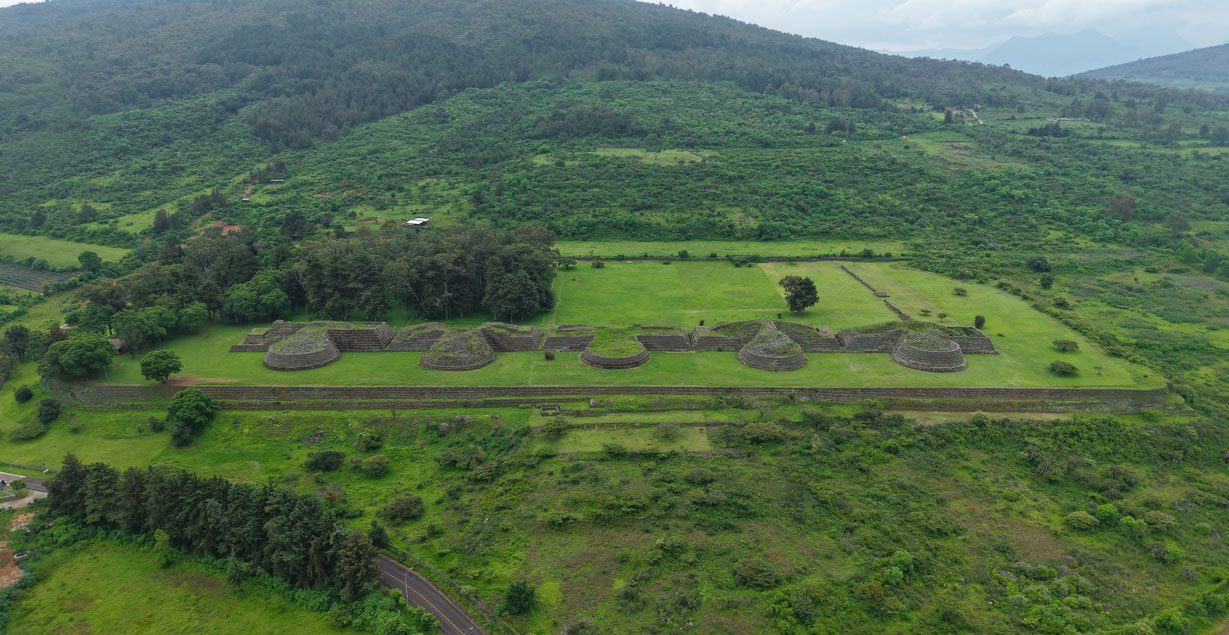La Nopalera
Discover
Huandacareo, also known as La Nopalera, stands on a hill to the northwest of Lake Cuitzeo. This archaeological site is an impressive example of pre-Hispanic engineering, where the terrain was conditioned by the construction of retaining walls and the mobilization of large volumes of fill material. The walls, especially visible in the southwest sector, although they seem to be there for no apparent purpose, fulfill the crucial function of preventing the surface from collapsing under its own weight. This careful work of land adaptation highlights the ingenuity and organization of the ancient cultures that inhabited the region, who mobilized a great deal of manpower to achieve this.
For more information about this archaeological site, click here.
Archaeological studies reveal that La Nopalera had at least two distinct periods of occupation. During the first stage, this place was a typical settlement of the Cuitzeo lake basin, characterized by its small size and the absence of direct links with a dominant lordship. However, the site presents architectural and ceramic characteristics that show the influence of the Bajío, such as sunken patios and decorated ceramics. In addition, in the tombs of the southwest sector, objects with clear Teotihuacan influences were found, and some individuals were even buried with attire that identifies them with characters from this great city of the central highlands. This cultural melting pot shows how La Nopalera was a meeting point where diverse traditions converged without losing their local identity.
In the second millennium, La Nopalera acquired greater relevance when it became an administrative center of the Tarascan Lordship. This change brought with it transformations in funerary practices and the appearance of new technologies, such as copper metallurgy. However, the archaeological record indicates a period of abandonment, followed by the reoccupation and adaptation of the site by new inhabitants.
Did you know that…?
Tomb 3 is the most “superficial” burial of the cist tombs. Ceramic objects belonging to an older ceramic tradition were found inside, but archaeologist Angelina Macias found a Tarascan vessel. Apparently it was placed several years later, when the Tarascan groups recovered the site.
